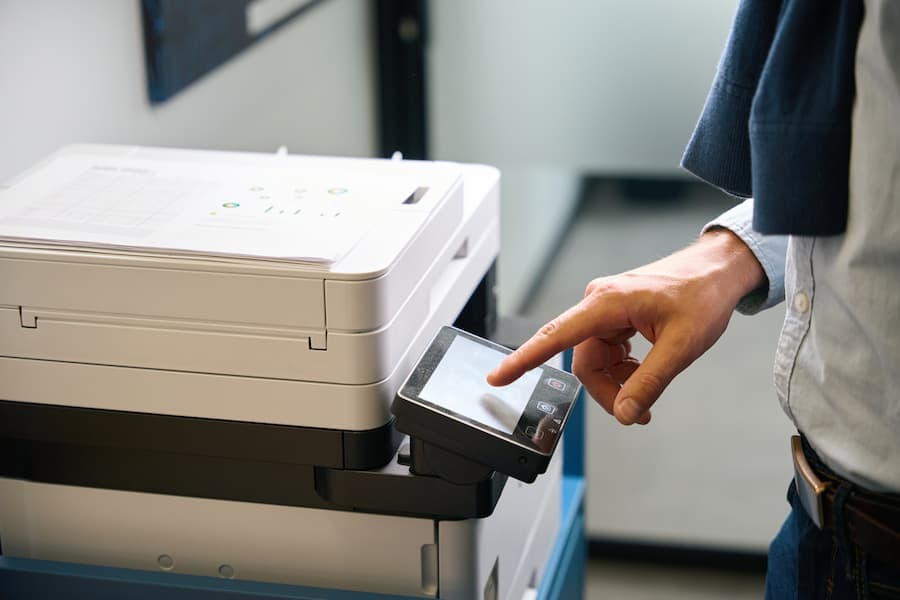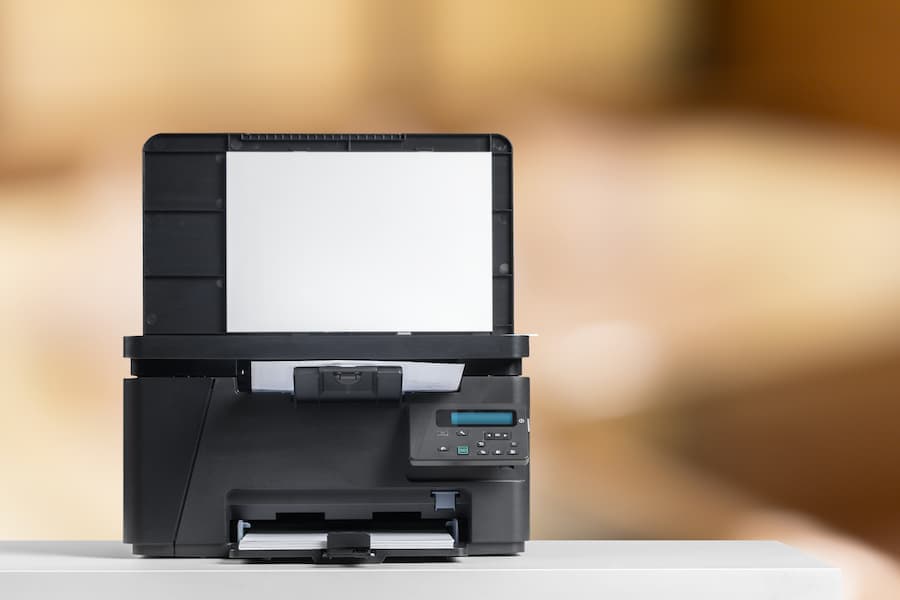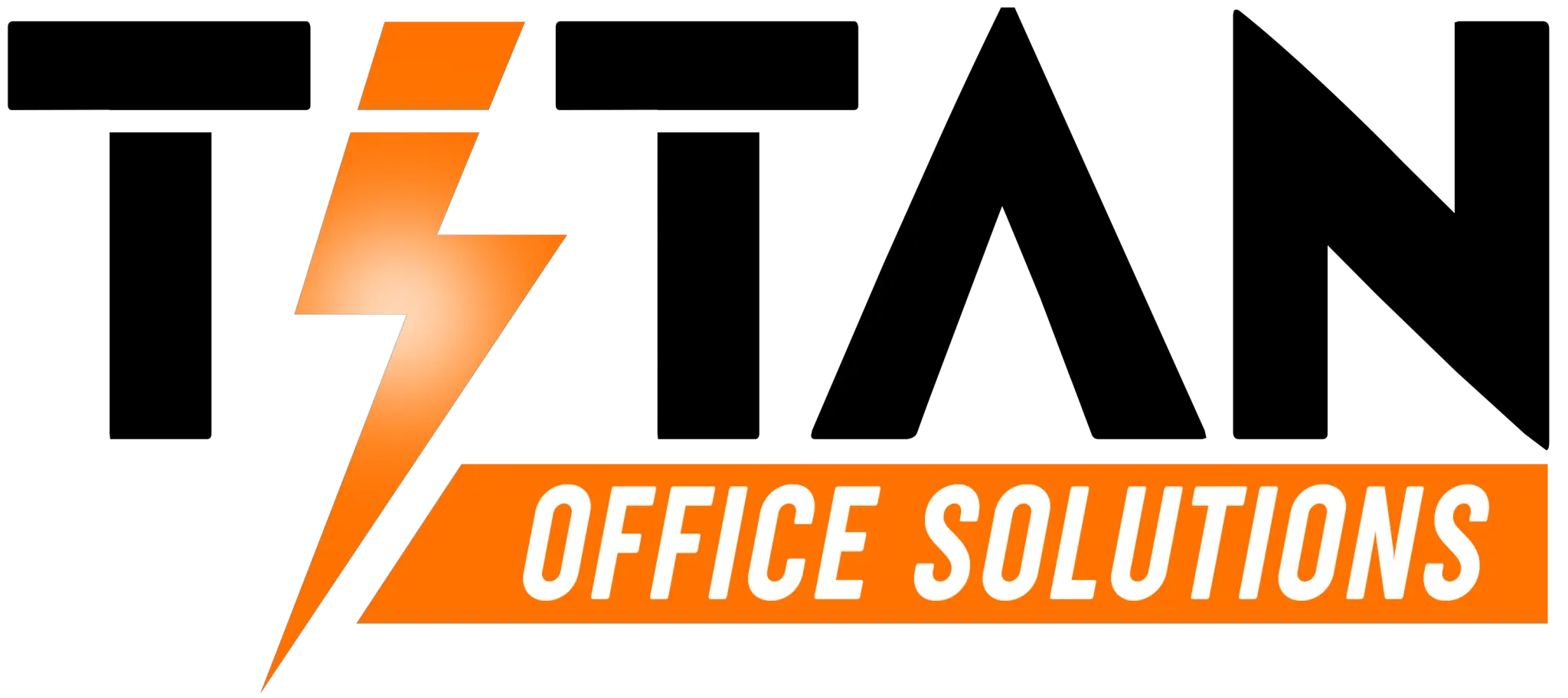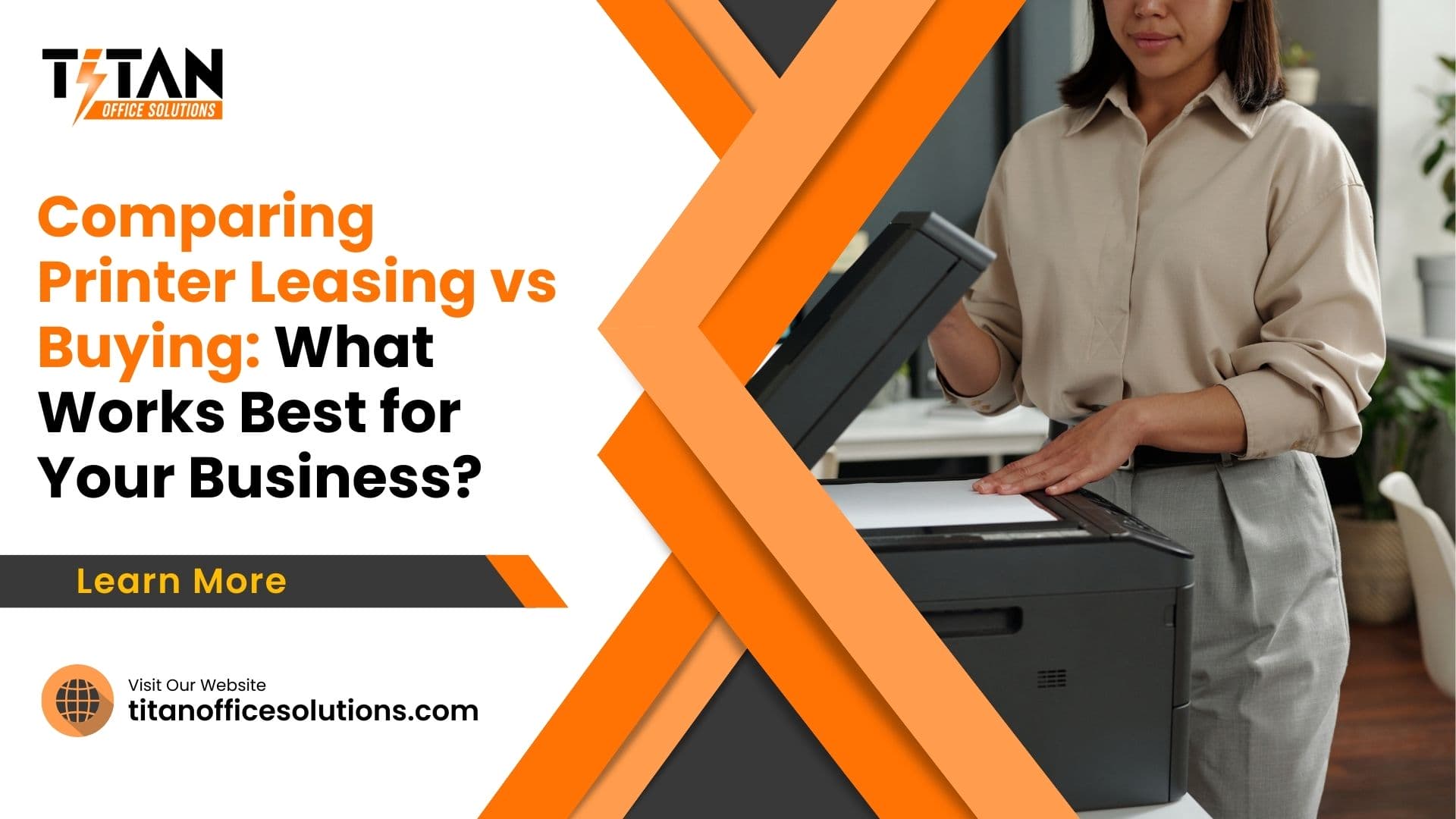Printer Leasing vs Buying
Printers play a crucial role in business operations, handling everything from routine document printing to large-scale marketing materials. Whether you run a small startup or a large corporation, having reliable access to high-quality printing is indispensable. However, businesses often find themselves at a crossroads when deciding between leasing a printer and buying one outright.
This decision isn’t just about cost—it’s about understanding what each option entails and how it impacts your business. Leasing a printer can offer flexibility and lower upfront costs, whereas buying can provide long-term savings and control. Therefore, it’s essential to weigh the pros and cons carefully.
In this article, we’ll explore the nuances of both leasing and buying printers, helping you determine what works best for your business. We’ll delve into costs, benefits, and real-world examples to provide a comprehensive guide. By the end, you’ll have a clear understanding of which option aligns with your business needs and financial health.
Understanding Printer Leasing
What is Printer Leasing?
Printer leasing is akin to renting a copier or printer for a specified period. You enter into a lease agreement with a provider, allowing you to use the equipment without purchasing it outright. This agreement typically lasts between one to five years, depending on your needs and the terms negotiated.

There are different types of leasing agreements. The most common is the operating lease, where the lessor retains ownership of the equipment, and you return it at the end of the term. Another option is the capital lease, which functions more like a loan. You have the option to purchase the equipment at the end of the lease term for a predetermined price. These flexible options make leasing an attractive choice for businesses seeking to manage their cash flow effectively.
Benefits of Leasing a Printer
Leasing a printer offers several key advantages. Firstly, it reduces upfront costs, which is crucial for businesses with tight budgets. You don’t need a significant initial investment, which frees up capital for other essential expenses.
Another significant benefit is access to the latest technology. Leasing allows you to upgrade your equipment regularly, ensuring you always have the best tools for the job. This is especially important in a rapidly evolving tech landscape where new features and improvements can enhance productivity.
Maintenance and service are often included in the lease agreement. This means that any repairs or servicing required during the lease term are handled by the provider, reducing downtime and additional costs.
Understanding Printer Buying
What is Printer Buying?
Buying a printer means you own the equipment outright after purchase. This involves a higher initial cost, but it also means you have full control over the asset. You can choose from a wide range of printers, from basic models to advanced multifunction devices, depending on your needs.

There are several types of printers available for purchase. For instance, inkjet printers are ideal for high-quality photo printing, while laser printers are better suited for high-volume document printing. Multifunction printers combine printing, scanning, copying, and faxing in one device, making them a versatile choice for many businesses. Therefore, purchasing a printer allows you to select the exact model that meets your specific requirements.
Benefits of Buying a Printer
Owning a printer comes with its own set of advantages. Firstly, there is ownership and asset value. Once you purchase a printer, it becomes a business asset that can be used until it no longer meets your needs. This can be a cost-effective solution in the long run.
Buying a printer can lead to significant long-term cost savings. Without ongoing lease payments, your overall expenditure on printing equipment may be lower over time. This can positively impact your cash flow and financial planning.
In addition, owning a printer provides greater customization and control. You can decide how and when to upgrade, choose your maintenance providers, and tailor the printer settings to your business’s unique needs.
Cost Comparison: Leasing vs. Buying
Initial Costs
When considering leasing a printer vs. buying one, the initial costs are crucial. Leasing a printer requires minimal upfront investment, often limited to a small setup fee and the first month’s lease payment. This makes it easier for businesses to acquire high-quality printers without a substantial cash outlay.
Conversely, purchasing a printer outright demands a significant initial expenditure. You need to pay the full price of the printer upfront, which can be a strain on your budget. This difference in initial costs is a primary factor in the lease vs. buy decision.
Ongoing Costs
Ongoing costs are another critical aspect. When you lease a copier, the monthly lease payments are fixed, making budgeting predictable. These payments often include maintenance and repair services, ensuring that any issues are swiftly addressed without extra costs.
In contrast, owning a printer means you’re responsible for all maintenance, repairs, and supplies. Over time, these costs can accumulate, potentially leading to higher expenses.
Total Cost of Ownership
The total cost of ownership includes all expenses incurred over the printer’s lifespan. Leasing typically spreads costs over the lease term, which can be easier to manage financially. You know what to expect each month, and you can upgrade to a new printer at the end of the lease.
Buying, however, might be more cost-effective in the long run if the printer is reliable and requires minimal repairs. Ownership means you can use the printer as long as it functions well, without ongoing lease payments. Therefore, the total cost of ownership varies based on maintenance and usage.
Hidden Costs and Fees
Hidden costs and fees can influence the decision to lease or buy. Leasing agreements may have additional fees for exceeding page limits, early termination, or upgrades. It’s essential to read the conditions of the lease carefully to avoid unexpected charges.
Flexibility and Scalability
Adapting to Business Growth
As your business grows, your printing needs may change. Leasing allows for easy upgrades, ensuring you always have the latest technology. When the lease period ends, you can upgrade to a new copier that better suits your growing demands. This adaptability is a significant advantage, especially for businesses experiencing rapid expansion.
On the other hand, buying a printer can limit scalability. Once you’ve purchased a printer, you’re committed to that equipment until it’s either obsolete or broken. Upgrading means buying a new printer, which involves another significant expense. Therefore, leasing provides more flexibility in adapting to business growth.
Contract Terms and Conditions
Leasing contracts come with specific terms and conditions. Typically, these include fixed monthly payments, maintenance agreements, and options for upgrades at the end of the lease. Understanding these terms is crucial to avoid unexpected fees and ensure the contract aligns with your business needs.
Ownership offers flexibility in how and when you use the printer. You can sell or trade in your printer when you want to upgrade, giving you more control. However, this flexibility comes with the responsibility of managing and maintaining the equipment. Balancing these factors is essential to choosing the right option for your business.
Technological Advancements
Staying Updated with Leasing
Leasing enables your small business to acquire sophisticated technology without the financial burden of purchasing it outright. Leasing contracts typically include options for regular upgrades, ensuring you have access to the latest printers and copiers.

This is particularly beneficial in a fast-paced technological environment where advancements can quickly make older models obsolete.
Technological Longevity with Buying
Buying a printer means committing to that technology for a longer period. While this can be cost-effective, it also means your equipment may become outdated. You miss out on the opportunity to upgrade regularly, which can be a disadvantage in a competitive market. Therefore, while buying might save money in the long run, it can limit access to new features and improvements that could enhance productivity.
Environmental and Sustainability Considerations
Leasing and Sustainability
Leasing can be more environmentally friendly. Leasing companies often refurbish and recycle older printers, reducing electronic waste. Moreover, regularly upgrading to more energy-efficient models can lower your business’s carbon footprint. By leasing, you contribute to a circular economy where equipment is reused and recycled rather than discarded.
Buying and Long-Term Environmental Impact
Buying a printer may have sustainability issues. Over time, the equipment may become less efficient, leading to higher energy consumption. Additionally, once the printer is no longer usable, disposing of it can contribute to electronic waste. Therefore, while owning a printer provides control and potential cost savings, it can have a negative environmental impact if not managed responsibly.
Decision-Making Factors
Assessing Business Needs
Evaluating your specific business needs is the first step in deciding whether to lease or buy a printer. Consider the volume of printing, the types of documents you produce, and your budget. For businesses with high printing demands and a need for the latest technology, leasing might be the best option.
Financial Health and Cash Flow
The impact of leasing vs. buying on your business finances is significant. Leasing requires lower upfront costs and predictable monthly payments, which can help manage cash flow. Conversely, buying a printer involves a larger initial investment but may offer cost savings over time. Assessing your financial health and cash flow needs can help you decide which option is more viable for your business.
What People May Also Ask
What are the pros and cons of leasing a printer?
Leasing offers lower initial costs and includes maintenance, but it comes with ongoing payments and potential hidden fees.
Is leasing a printer more expensive than buying?
It can be more expensive over time due to continuous lease payments, but it provides flexibility and access to new technology.
How do I decide whether to lease or buy a printer?
Consider your budget, printing needs, and whether you prioritize short-term savings or long-term cost efficiency.
What happens at the end of a printer lease term?
At the end of the lease term, you can return the printer, renew the lease, or purchase the printer at a predetermined price.
Conclusion
In conclusion, deciding whether to lease or buy a printer hinges on your business’s unique needs, financial health, and long-term goals. Leasing provides flexibility, lower upfront costs, and regular upgrades, while buying offers long-term savings, ownership, and control. By carefully considering the pros and cons of each option, you can make an informed decision that best supports your business’s growth and efficiency.
Titan Office Solutions
Phone: (704) 741-0821
Email: info@titanofficesolutions.com
Hours of Operations: Monday through Friday from 8:30 AM to 6 PM EST.
Website: titanofficesolutions.com

